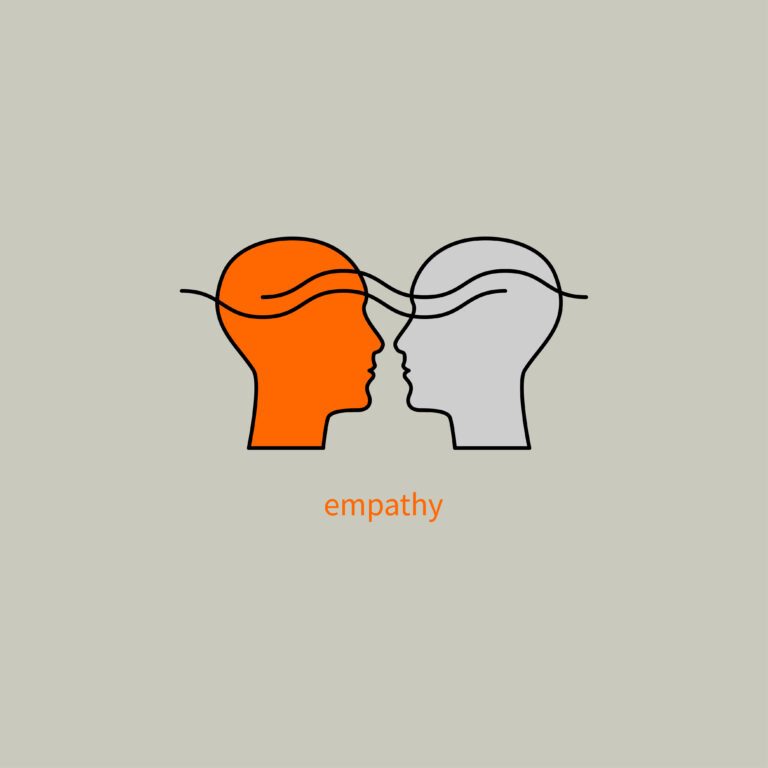Working in a remote UX environment? These tools can help teams optimize processes

Remote UX work has evolved far beyond a stopgap solution—it’s now essential for modern product development. Distributed teams in B2B SaaS and health tech need tools that support seamless collaboration, research, and iteration, no matter where they work.
AI-powered platforms, real-time integrations, and asynchronous workflows are making remote UX collaboration more effective than ever. This guide highlights the top tools for remote UX in 2025, helping product leaders choose solutions that enhance efficiency, drive innovation, and create seamless user experiences.
TL;DR:
Choosing the right UX collaboration tools is critical for remote product teams. This 2025 guide reviews the top tools for research, whiteboarding, workshops, and testing — with recommendations tailored for product leaders and growing design teams.
Real-time & asynchronous communication
Slack (Best for quick team collaboration)
Still the gold standard for remote teams, but now enhanced with Slack AI for real-time summarization and search across conversations. Slack integrates with Notion, Jira, and Figma, allowing seamless collaboration across design and development teams.
Features like Slack Huddles provide low-friction, audio-first discussions that feel like quick office drop-ins, keeping UX teams agile without unnecessary meetings. Workflow automation helps manage recurring design reviews and research synthesis, reducing manual effort.
Microsoft Teams (Best for enterprise UX teams)
A strong alternative to Slack, especially for teams using Office 365. Microsoft’s AI-powered Copilot can summarize chats, suggest next steps, and integrate directly into project workflows. Deep integration with SharePoint and OneDrive allows for effortless version control of UX documents and research reports. Teams also provides robust meeting recording and transcript search features, helping UX teams quickly locate key takeaways from stakeholder meetings or usability test debriefs.
Loom (Best for async updates)
Not every conversation needs a meeting. Loom allows UX researchers, designers, and product leaders to record quick video messages for async collaboration, reducing Zoom fatigue while keeping teams aligned. Annotations, chapter markers, and AI-powered transcription make it easier to share feedback on designs or user research insights. UX teams can record usability test sessions, design critiques, or project updates and share them instantly, fostering efficient asynchronous workflows.
User research & testing
Zoom + AI Transcription (Best for live user interviews)
Zoom remains our go-to for user interviews, especially with its new AI features:
- Automated note-taking and transcription (via Otter.ai integration)
- Real-time sentiment analysis to gauge participant reactions
- AI-powered meeting summaries to extract key insights automatically
- Multi-speaker identification to clarify participant responses in transcripts
It can also integrate with tools like Rewind AI and Dovetail, and that makes post-interview analysis more efficient. Ultimately these tools reduce the time required to synthesize qualitative data.
Dovetail (Great for qualitative research analysis)
Product leaders juggling multiple research efforts can use Dovetail’s AI to analyze interview transcripts, spot trends, and share insights more efficiently. Its automated tagging system categorizes responses, making it easy to track themes across multiple studies. The sentiment analysis feature helps researchers detect pain points and user frustrations at scale.
We haven’t started using it on a regular basis, but we’re looking at making it a more regular tool in our toolbelt.
Maze & Lookback (Great for unmoderated user testing)
- Maze: Rapid prototype testing with built-in analytics, allowing UX teams to collect actionable insights on navigation, conversion paths, and design effectiveness.
- Lookback: Live and asynchronous usability testing with session recordings, featuring real-time note-taking and the ability to interact with users during sessions.
Hotjar & FullStory (Great for behavior tracking)
If you want to understand user behavior beyond interviews, these tools offer session recordings, heatmaps, and AI-generated insights into user frustrations.
- Hotjar excels in click tracking, heatmaps, and surveys, helping UX teams identify problem areas in product design.
- FullStory provides AI-driven session insights that pinpoint friction points, making it easier to diagnose usability issues.
Zoom
We started with Zoom in 2019 after testing it on a few calls. Since then, Zoom is our go-to for nearly every client call. We also use it for coordinating remote meetings, virtual intros, and class instruction. We pay for an account, which gives us the freedom to schedule long meetings, customize the background, record, and more.
Zoom is a strong contender for replacing Google Hangouts completely. Our remote UX team prefers it because it just seems to work better and offers remote control features.
UX ideation & collaboration
FigJam (Best for UX workshops & brainstorming)
Figma’s whiteboarding tool has gained popularity over Miro and Mural — including here at Standard Beagle. Having everything in one place makes everything easier.
With templates for user personas, journey mapping, research synthesis, and design sprints, Figjam is tailor-made for UX teams. It allows for sticky notes, voting, and interactive brainstorming, making it a great option for distributed teams running remote design thinking workshops.
Figma (Best for real-time UX/UI design collaboration)
Figma remains the dominant design tool, allowing multiple stakeholders to comment directly on designs. AI-powered layout refinements and auto-suggestions help teams iterate faster, while real-time collaboration ensures seamless stakeholder feedback. Figma remains the dominant design tool, allowing multiple stakeholders to comment directly on designs. AI-powered layout refinements and auto-suggestions help teams iterate faster, while real-time collaboration ensures seamless stakeholder feedback.
For developers, Figma’s Dev Mode bridges the gap between design and code, providing specs, CSS code snippets, and component libraries directly within the platform. Interactive prototypes give engineers a better understanding of transitions, animations, and user interactions without relying on separate documentation.
Figma also integrates seamlessly with GitHub, Jira, and development pipelines, ensuring smooth handoffs without additional tools.
Notion (Great for UX documentation & research organization)
Notion serves as a central hub for UX strategy, research documentation, and design systems, integrating well with Slack and Jira. UX teams use it for organizing usability reports, creating knowledge bases, and tracking project roadmaps. With its AI-powered search, teams can quickly retrieve past insights and maintain a well-structured research repository.
AI-powered UX research & workflow optimization
ChatGPT, Claude AI, Perplexity (Best for research summarization)
- Summarize user interviews and usability studies instantly.
- Generate research insights and hypothesis statements.
- Assist with writing UX research reports.
- Automate competitor analysis by processing large volumes of product reviews and market research data.
- Identify UX trends by analyzing vast datasets, helping teams stay ahead of industry shifts.
Rewind AI (Great for automated meeting recall)
Never forget a research session or stakeholder meeting—Rewind AI records and makes conversations searchable. It also integrates with note-taking apps, allowing UX teams to automatically generate key takeaways and action items.
Gamma.app (Great for AI-powered research presentations)**
Turn UX research data into compelling presentations and reports with AI-generated visuals and storytelling suggestions. Gamma’s automated slide design ensures that insights are presented in an engaging and visually appealing way, reducing the time spent on formatting.
QA & usability testing
BrowserStack (Best for cross-device testing)
We’re been using Browserstack for years and it’s still our gold standard.
Quickly test your website or app on real devices without owning them. A must-have for UX teams handling multi-platform products. Automated parallel testing speeds up QA by allowing tests to run simultaneously across multiple browsers and devices.
Screencastify & Loom (Best for bug reporting & feedback sharing)
We love Loom — it can help a ton with clarifying issues quickly.
Instead of writing unclear bug reports, record a quick video to show exactly what’s happening. These tools help capture screen recordings with annotations, making it easy to highlight visual inconsistencies, broken UI elements, or performance issues. Loom’s AI-powered transcription and summarization help teams extract key issues quickly from longer reports.
BugHerd (Best for visual bug tracking)**
A superior alternative to Usersnap, BugHerd allows UX teams to pin feedback directly on designs, making it easier for developers to fix UI issues. It tracks issues like a Kanban board, assigning them to team members for faster resolution. BugHerd’s browser extension makes it simple for testers to capture UI feedback in real-time without switching tools.
TestRail (Great for test case management)**
For remote UX teams working closely with QA, TestRail provides a structured way to manage and execute test cases. It integrates with Jira, Selenium, and BrowserStack, allowing for a seamless handoff between manual and automated testing. AI-driven test recommendations help teams prioritize the most critical UX issues.
Session replay tools (FullStory, Smartlook) (Great for usability debugging)**
Session replay tools like FullStory and Smartlook capture user sessions and allow teams to watch real interactions in detail. These tools use AI-powered event tracking to identify rage clicks, abandoned flows, and unexpected errors, providing deep insights into real user pain points. Automatic issue tagging helps UX teams flag critical usability problems without manual review.
Final recommendations for product Leaders
Rather than adopting every tool, focus on the core needs of your product and remote UX team. Our top picks:
- Slack for communication
- Figma + FigJam for UX collaboration and developer handoff
- Dovetail + Maze for research
- BrowserStack & TestRail for QA testing
- Loom & BugHerd for bug reporting and issue tracking
The future of remote UX collaboration is AI-driven, asynchronous, and deeply integrated. By choosing the right tools, product leaders can keep teams aligned, accelerate research, and deliver exceptional user experiences—regardless of where they work.
Want help selecting and implementing the right UX tools for your remote team?
We help product leaders streamline design processes, improve collaboration, and scale research. Talk to our UX strategy team
Frequently asked questions about remote UX collaboration tools
What should I look for in a remote UX collaboration tool?
Look for real-time collaboration features, accessibility for stakeholders, integrations with design tools, and ease of onboarding for your team.
Can I use multiple tools together?
Absolutely. Many product teams pair tools — like using Miro for whiteboarding, Figma for design, and Lookback for testing — to build a full UX workflow.
Are these tools suitable for small teams or startups?
Yes. Many of the tools mentioned (like FigJam, Notion, or Maze) are budget-friendly or offer free plans, making them great for small teams.
How do I choose the best tool for my team?
Start by identifying your team’s biggest UX collaboration needs: ideation, testing, documentation, or research. Choose tools that are easy to adopt and fit your existing stack.
Do any of these tools support asynchronous UX collaboration?
Yes. Tools like Notion, Loom, and Dovetail are excellent for async communication, research analysis, and stakeholder reviews.











